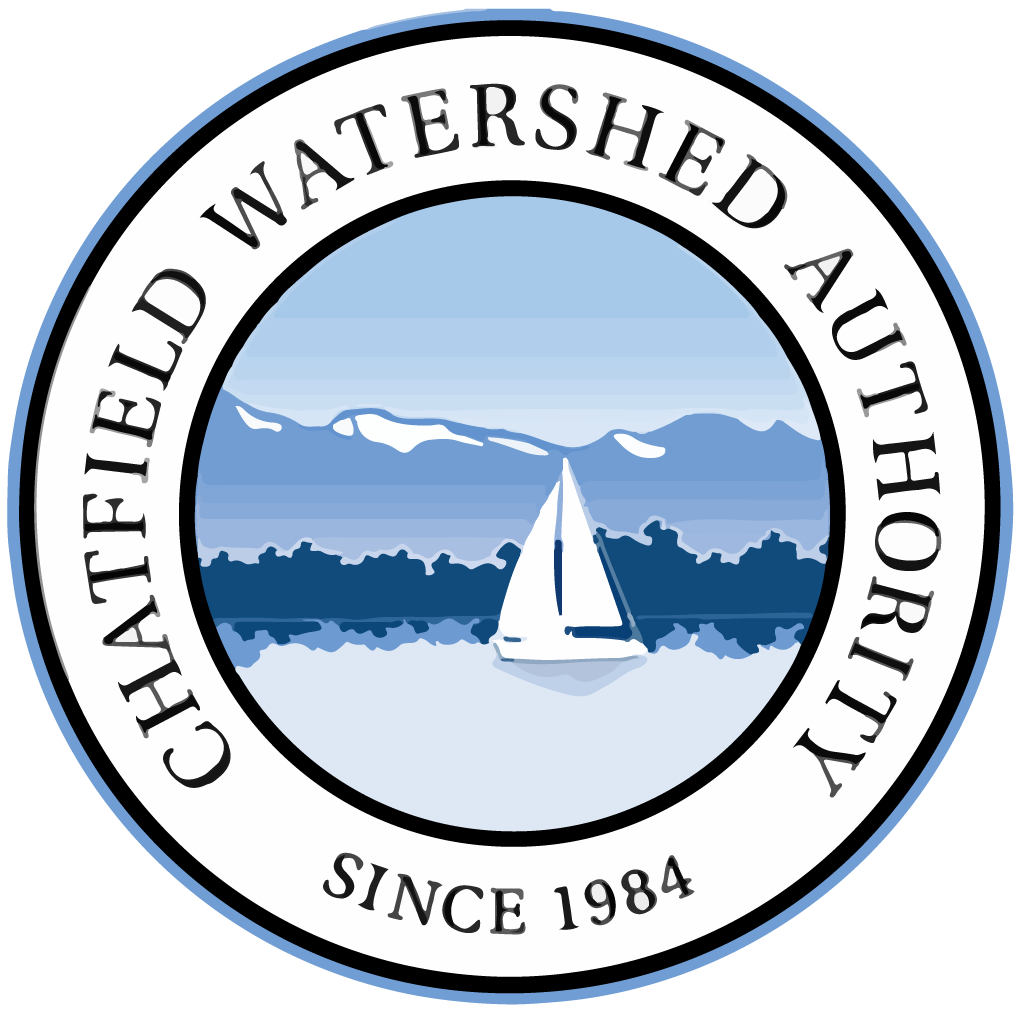
Who We Are
The South Platte River and Plum Creek are fed by the Rocky Mountains and located just southwest of the Denver Metro area. As a natural process, these rivers periodically flooded. With more development in the area, the flooding impacted the community, creating costly amounts of damage. In 1965, a catastrophic flood swept through the South Platte River in which 21 people died, 10,000 people were evacuated and over $365 million in damages were seen. The flood provided the impetus for the construction of Chatfield Dam and the creation of the reservoir which was completed in 1975. The Chatfield Watershed Authority (the Authority) was established in 1984, under the authority of the Colorado Department of Public Health and Environment (CDPHE), to promote the protection of water quality in the Chatfield Watershed for recreation, fisheries, drinking water supplies, and other beneficial uses. As Colorado continues to grow, so does the role of Chatfield Reservoir. In 2014, drinking water storage was permitted by the Army Corp of Engineers. Construction to expand the capacity of the reservoir began in 2017. How the Authority controls pollution became even more crucial.
Our purpose
Our purpose is to preserve the beneficial uses in Chatfield Reservoir and Watershed through the promotion of point source, nonpoint source, and stormwater controls that reduce phosphorus and chlorophyll. The Authority is charged with managing a total maximum annual load of phosphorus into the reservoir to ensure water quality is not degraded due to excess formation of algae, measured as chlorophyll a. The Authority achieves this by allocating allowable loads to point source and nonpoint source dischargers and supporting projects that reduce phosphorus in the watershed. The members work cooperatively to achieve this mission within their respective jurisdictions.
Background
Since 1984, the Authority has monitored water quality in the reservoir and undertaken limited measures to protect water quality in the Watershed through voluntary funding contributions and limited grants. The Authority, in coordination with its member agencies, is charged with implementing point source, nonpoint source, and stormwater controls pursuant to the Chatfield Reservoir Control Regulation #73 (5 CCR 1002-73) to protect water quality and beneficial uses of the Reservoir. The Chatfield Watershed Authority is comprised of stakeholders within the 400 square mile watershed. The Authority collects water quality data to determine watershed health. Chlorophyll levels, temperature, dissolved oxygen concentration, phosphorous concentrations, nitrogen concentrations, and inflow quality are monitored. The members develop and implement projects to protect the watershed and reservoir health and water quality. Opportunities exist within the watershed to address the chemical, physical and biological constituents (pollutants) that impact the watershed. Some examples of this include phosphorus removal in wastewater treatment, stabilizing degraded streambanks, mitigating runoff from agricultural lands, minimizing leachate from septic systems, controlling runoff from wildfire burn areas, and providing public education for reducing contamination from the actions of people. Most of the pollutants reaching the reservoir are from nonpoint sources, which means they come from people. These sources of constituents may include excess fertilizer runoff from lawns, bacterial-infested pet waste left on trails, overgrazed agricultural lands, and drips of oil, gas and fluids from vehicles. The Authority adopted a Watershed Plan in 2015 that identifies nonpoint source control projects to protect the beneficial uses at the reservoir. The Authority has developed a watershed model as a tool to measure water quality impacts from pollutant sources and watershed controls. Additional funding and data collection are needed to fully utilize this tool in predicting concerns and mitigation projects within the watershed.
Our Progress
A reservoir model is being developed as part of the Chatfield Reservoir Reallocation Project. This tool will be used to predict impacts to the reservoir from internal and external loading of phosphorus and chlorophyll a. Together, these tools may be used for prioritizing projects within the watershed for preserving the beneficial uses.
Chatfield Watershed Authority Board Members
Board Director: Lesley Dahlkemper, Jefferson County Commissioner
Board Director: Kevin Van Winkle, Douglas County Commissioner
Board Director: Laura Cavey, Town of Castle Rock Councilman
Board Director of Water and Sanitation Members: Weston Martin, Plum Creek Water Reclamation Authority
Board Director of Other Members: Brent Soderlin, City of Littleton
Chatfield Watershed Authority Technical Advisory Committee (TAC)
Jefferson County: Representative, Patrick O'Connell
Dominion Water & Sanitation District: Representative, Britta Strother
Castle Pines Metropolitan District: Representative, Joshua Shackelford
Centennial Water & Sanitation District: Representative, Julie Tinetti
City of Littleton: Representative, Sarah White
Denver Water: Representative, Abigail Wright
Douglas County: Representative, Ryan Adrian
Louviers Water & Sanitation District: Representative, Matt Collitt
Roxborough Water & Sanitation District: Representative, Mike Marcum
Plum Creek Water Reclamation Authority: Representative, Kirby Clark
Perry Park Water & Sanitation District: Representative, Diana Miller
Town of Castle Rock: Representative, Hannah Branning
Town of Larkspur: Representative, Todd DeVoe
Chatfield Watershed Authority Members
City and County of Denver (acting through its Board of Water Commissioners)
